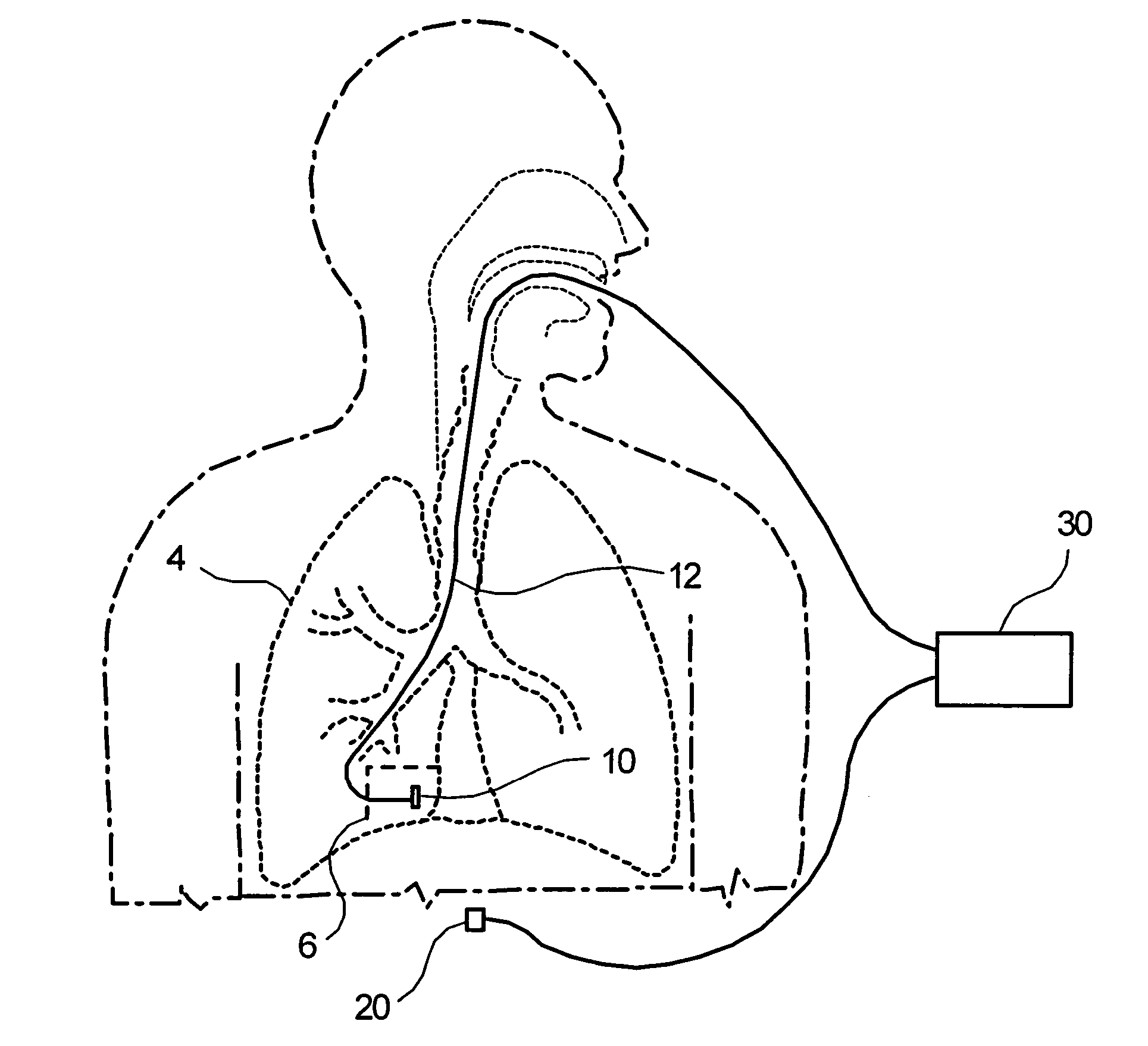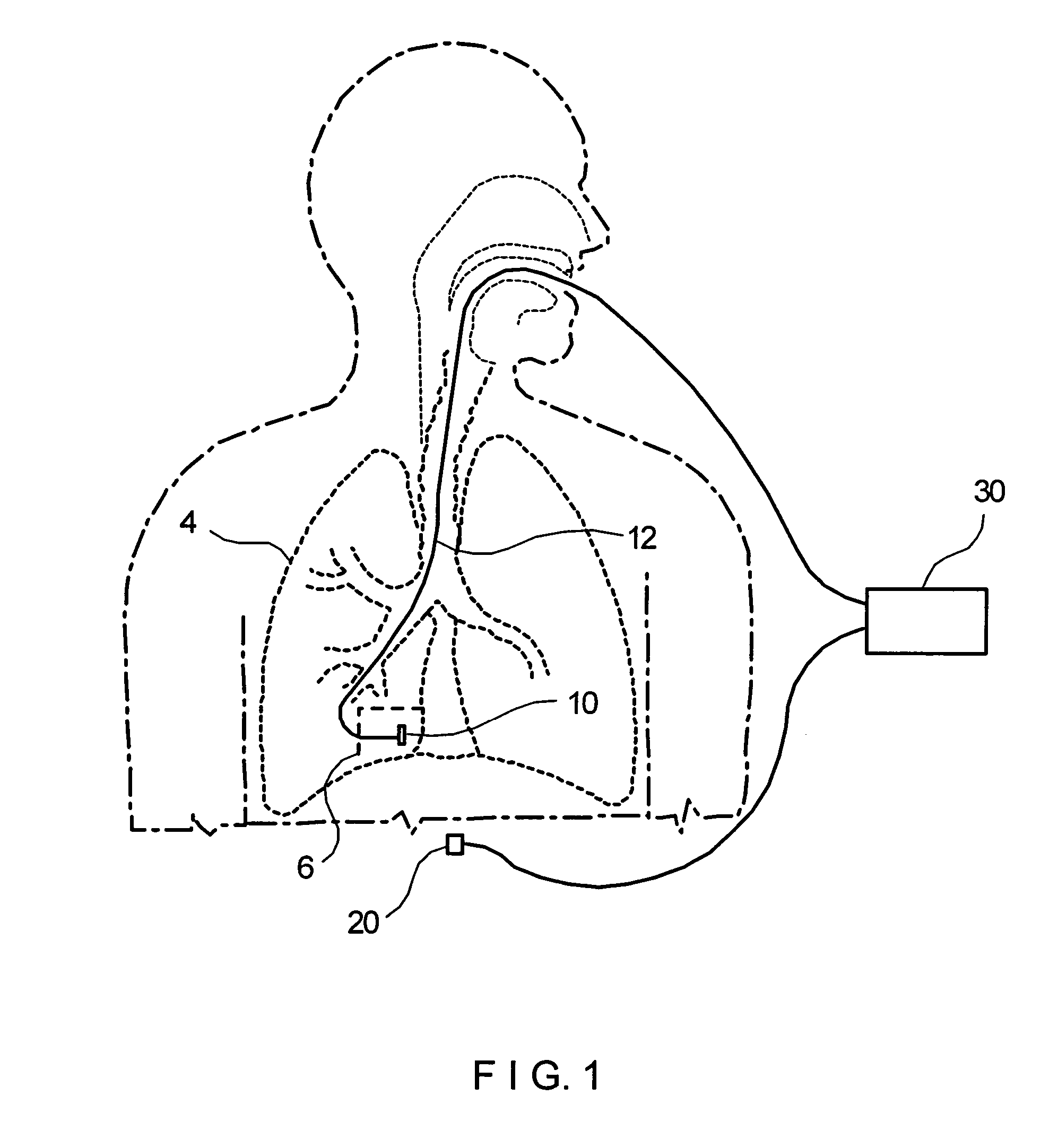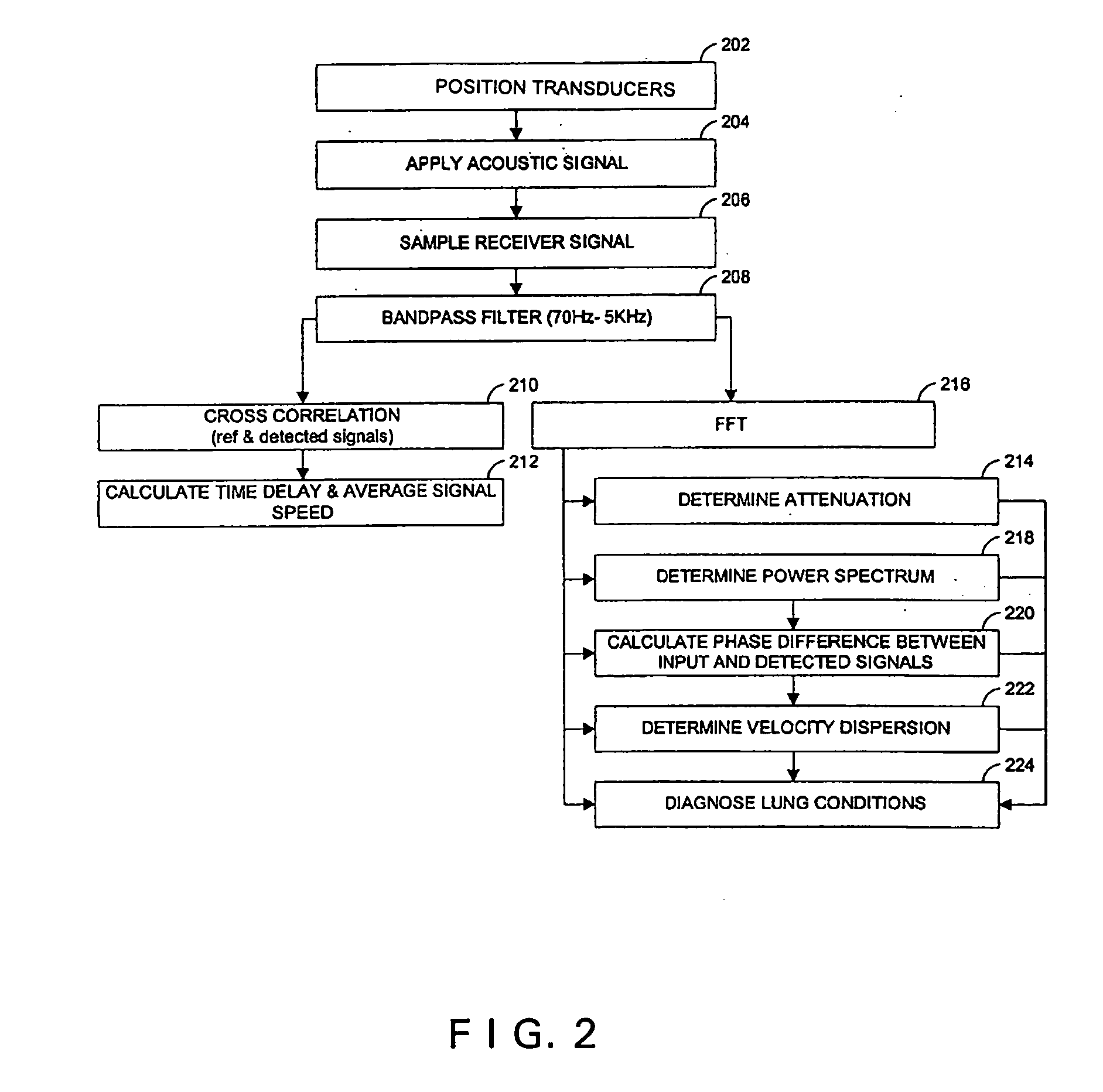Devices and methods for tissue analysis
a tissue analysis and device technology, applied in the field of tissue analysis, can solve the problems of large equipment bulky and expensive to install, complicated techniques, and high cost, and achieve the effects of reducing the risk of infection, and improving the quality of tissue analysis
- Summary
- Abstract
- Description
- Claims
- Application Information
AI Technical Summary
Problems solved by technology
Method used
Image
Examples
Embodiment Construction
[0081] Methods and devices according to preferred embodiments of the present invention perform a localized measurement of the properties of tissue, such as lung tissue, with a view to determining whether or not the tissue is diseased, such as emphysematous or affected by cystic fibrosis, and the degree to which the disease has progressed. Additional results of this measurement would be a diagnosis of the disease stage of that portion of an organ, such as a lung.
[0082] The present description will primarily address preferred embodiments of methods and devices according to the invention in which lung tissue is assessed for the presence and stage of emphysema, or cystic fibrosis or chronic bronchitis. But as described in the previous paragraph, other methods and devices according the invention can assess the presence and stage of other diseases in other tissue or in other organs or portions of organs.
[0083] Characteristics of biological tissues can be determined by measuring the velo...
PUM
 Login to View More
Login to View More Abstract
Description
Claims
Application Information
 Login to View More
Login to View More - R&D
- Intellectual Property
- Life Sciences
- Materials
- Tech Scout
- Unparalleled Data Quality
- Higher Quality Content
- 60% Fewer Hallucinations
Browse by: Latest US Patents, China's latest patents, Technical Efficacy Thesaurus, Application Domain, Technology Topic, Popular Technical Reports.
© 2025 PatSnap. All rights reserved.Legal|Privacy policy|Modern Slavery Act Transparency Statement|Sitemap|About US| Contact US: help@patsnap.com



